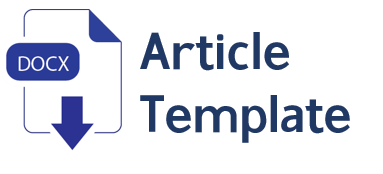Analisis Rasio Keuangan Camel Untuk Menilai Kinerja Bank Persero Konvensional Di Indonesia Periode 2010-2012
DOI:
https://doi.org/10.30741/wiga.v4i2.131Keywords:
CAMEL, Capital Adequacy Ratio, CAR, Bad Debt Ratio, BDR, Return on Assets, Return on Equity, ROE, Net Interest Margin, NIM, Operating Expenses to Operating Income, Loan to Deposit Ratio (LDR)Abstract
The research was conducted at the state-owned banks in Indonesia Conventional whose financial statements have been published. The purpose of this study was to assess the performance of state-owned banks in Indonesia Conventional period 2010 - 2012 in terms of financial ratios CAMEL. Sources of data used in this study is an overview of data in the form of internal Internal company, the profile of each Government-Owned Commercial Banks (Persero) Conventional, data on the number of customers, the legal foundation of the establishment of State-Owned Commercial Banks (Persero) Conventional and securities licensing, and financial statement data are derived from the data of four (4) financial statements of the Government-Owned Commercial Banks (Persero) Conventional in Indonesia for three (3) consecutive years, ie 2010-2012. While the source of the data came from state-owned banks in Indonesia Conventional whose financial statements have been published by Bank Indonesia. The financial statement data used consist of a balance sheet and income statement.
Variables used to assess the performance of state-owned banks in Indonesia is Conventional financial ratios CAMEL, consisting of the ratio Capital Adequacy Ratio (CAR), Bad Debt Ratio Ratio (BDR), Return on Assets ratio (ROA), Return on Equity ratio (ROE ), Ratio of Net Interest Margin (NIM), Ratio of Operating Expenses to Operating Income (ROA), and the ratio of loan to deposit ratio (LDR). This variable is an independent variable, where the independent variable is the independent variable, not the independent variable is always paired with the dependent variable. So in this study the researcher did not make comparisons and are not looking for a relationship with other variables. Therefore, research like this is called descriptive research.
Results of this study indicate the financial performance of state-owned banks in Indonesia as a whole Conventional each CAMEL financial ratios from 2010 to 2012, the ratio of Capital Adequacy Ratio (CAR), Bad Debt Ratio Ratio (BDR), Return on Assets ratio (ROA ), Ratio Return on Equity (ROE), Ratio of Net Interest Margin (NIM), and the ratio of loan to deposit ratio (LDR) has fluctuated increased, while the ratio of Operating Expenses to Operating Income (ROA) decreased from 77.73% to 70 , 96 so it should be increased operating income, respectively Conventional owned banks in Indonesia. Broadly speaking, its financial performance is in accordance with Bank Indonesia, but there needs to be an increase in the ratios, especially the ratio Ratio of Operating Expenses to Operating Income (ROA). This shows that the performance of state-owned banks in Indonesia Conventional CAMEL ratios in terms of the provisions of Bank Indonesia, so it can be concluded that its financial performance from 2010 to 2012 quite well.









